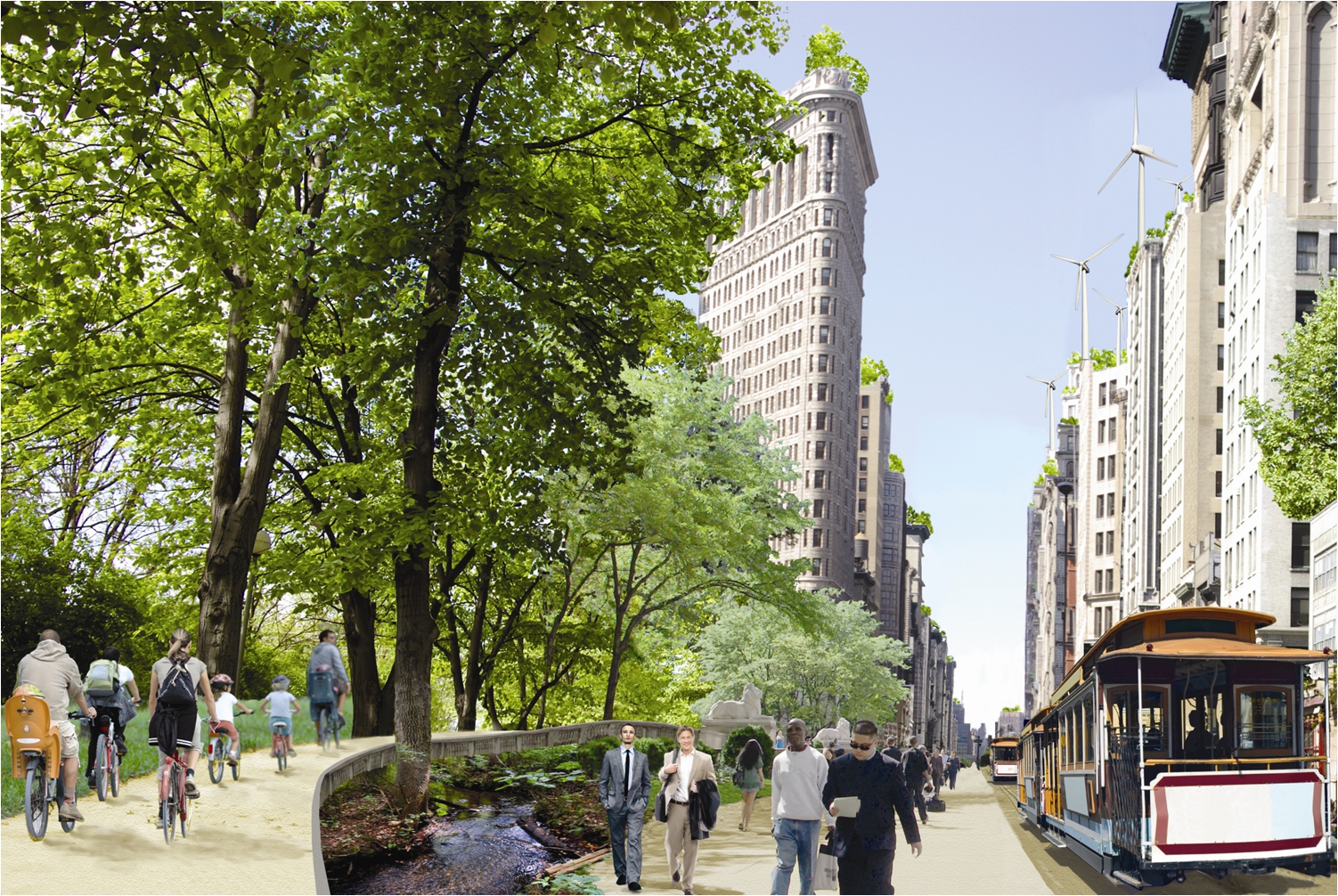New York City reimagined
Eric Sanderson peels back the concrete layers of New York City
Emma Bryce • November 18, 2011

Madison Square Park in 2409, as imagined in Eric Sanderson's Mannahatta. [Image Credit: Courtesy Heidi Neilson / Eric W. Sanderson / The Mannahatta Project / Wildlife Conservation Society]
Eric Sanderson is a landscape ecologist who re-imagined Manhattan as it would have looked in 1609. This led to his book, Manahatta — “island of many hills” in the Native American Lenape language. Lately, he’s taken to gazing on New York’s outer boroughs with an ecologist’s eye for a project called Welikia, meaning “our good home.”
Read coverage of Sanderson’s recent talk at the Secret Science Club here, on the Urban Scientist blog.
Why ecology?
When I was in high school I walked the John Muir trail from Yosemite to Mount Whitney, which was 212 miles and three weeks of backpacking, where you never cross a road. That was fundamental to me. I’m also trained in landscape ecology. I think ecology and biology face the biggest global problem: How are you going to get this huge population of large-bodied primates, i.e. people, to live on the planet without using up all the resources in the process?
What does historical Manahatta tell us about New York City?
That the most important thing is to remember that it is an ecological place. The old idea of New York City is that it’s so big, the buildings are so tall, the asphalt is so thick, that nature has been squashed out of existence. Instead, we are trying to build into the notion of what it means to be a New Yorker, an idea that people actually live in a very ecologically robust place.
How do you “uncover” the city’s historical ecology?
First, we look at historical maps that incorporated natural features. Once we’ve identified these natural resources and geo-referenced them, we generate the past based on habitat connections. For example, a beaver needs a stream, and aspens and alders. It’s a “food web-esque” representation; in this case we use food webs, water, shelter, and reproductive resources as a way to project spatial distributions of species.
Talk me about the Welikia Project.
Whereas Manahatta is a conceptual project — how we think about cities as they relate to nature, both in the past, the present and the future — with Welikia we’re trying to look at what’s going on with nature in the city today, in a way that’s directly comparable to what was there 400 years ago. This produces some great opportunities for conservation and restoration in the city, and a lot of them are in the outer boroughs.
You have a website called “Manahatta 2409” — what is this about?
Another project component of Welikia is the future of the city. This comes in the form of Manahatta 2409, a website that will allow anybody to zoom to any block of Manhattan and see how carbon, water and species cycled through that block 400 years ago. They can then “re-design” their block to see the responses in terms of carbon, water and biodiversity today. It allows you to extrapolate your design across the whole city, to see what the consequences would be.
Given the chance to resurrect one landscape, which would you choose?
The Lenape — Native Americans — used to light fires in Harlem. They made Harlem into a sort of open savannah, which they did to improve the hunting for deer and elk. I think having a wigwam on the hills at the northern end of Central Park, looking out across Harlem, would have been pretty fantastic.